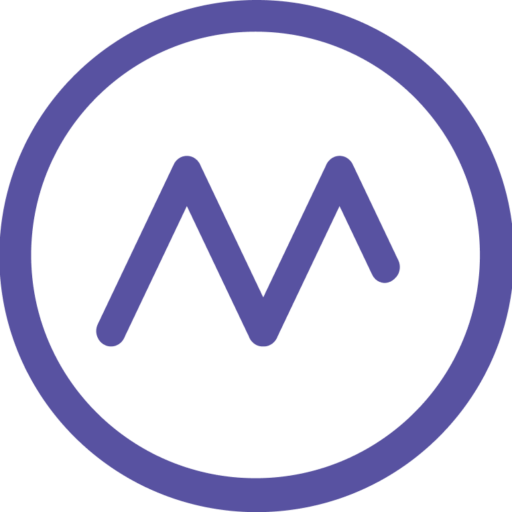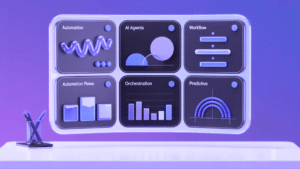Does your business need media monitoring tools now? Digital platforms, online streams, and influencer-driven news are growing. With 90.8 million social media users averaging 3.5 hours daily, conversations happen around the clock. Brands face reputation challenges that would have been unimaginable just five years ago. Negative sentiment significantly damages conversion rates and customer loyalty, while brand mentions occur constantly across digital platforms.
The question isn’t whether you need media monitoring. It’s whether you can survive without it.
Topics Covered in This Article:
- Your brand is experiencing uncontrolled narrative spread
- You’re unable to measure marketing and PR ROI effectively
- Your crisis management strategy is purely reactive
- You lack competitive intelligence and market insights
- Your customer engagement and experience management is insufficient
- Implementation considerations for 2025
Here are five unmistakable signs that your Philippine business requires media monitoring tools to succeed in 2025.
1. Your Brand Is Experiencing Uncontrolled Narrative Spread
The most urgent sign that your business needs media monitoring tools is discovering conversations about your brand after they’ve already gained momentum. Negative sentiment significantly damages conversion rates and customer loyalty, making early detection crucial for reputation management.
The clearest warning signs include finding out about negative reviews through customers or employees rather than your own monitoring systems. You discover competitor activities weeks after they’ve begun affecting your market position.
The consequences of remaining unaware are severe. A single negative review can cost businesses thousands in lost sales, while 93% of consumers report that online reviews significantly influence their buying choices.
Essential tracking includes brand mention volume and sentiment analysis across platforms. Share of voice compared to competitors in your industry reveals your market standing, while crisis indicators such as sudden spikes in negative mentions provide early warnings.
2. You’re Unable to Measure Marketing and PR ROI Effectively
The second critical indicator is struggling to demonstrate the tangible value of your marketing and communications efforts. Effective media monitoring provides measurable ROI insights that can either save businesses thousands or help increase revenue substantially.
The biggest challenges businesses face include being unable to track brand awareness and sentiment changes over time. You lack competitive benchmarking data to assess relative performance and miss opportunities to optimize campaigns in real-time based on audience response.
Media monitoring tools solve these problems by enabling businesses to calculate precise metrics like Media Impact Value (MIV) and conversion rates from different platforms. They also allow businesses to measure cost-per-engagement across channels.
Key metrics that matter most include cost per acquisition (CPA) from different media channels, which shows which platforms deliver the best returns. Brand awareness lift from PR campaigns demonstrates the value of earned media. While competitive share of voice analysis reveals your market position.
3. Your Crisis Management Strategy Is Purely Reactive
The third sign is having a crisis management approach that only responds after problems have already escalated. Proactive crisis detection has become essential, with real-time monitoring serving as an early warning system for potential reputation threats.
The main problems with reactive management include learning about crises through customer complaints rather than early warning systems. You spend hours manually searching for mentions across platforms during emergencies when time is critical.
Early detection systems prevent significant reputation damage by enabling swift responses to emerging issues. A quick monitoring capability allows for proactive communication strategies that maintain customer trust and prevent reputation damage.
Essential monitoring capabilities include automated alerts for unusual spikes in negative sentiment that keep you informed instantly. Real-time tracking of crisis-related keywords catches issues early before they escalate beyond control.
4. You Lack Competitive Intelligence and Market Insights
The fourth indicator is operating without sufficient knowledge of your competitors and market dynamics. Businesses need competitive intelligence to identify opportunities, understand market positioning, and adapt strategies based on industry trends.
Major blind spots include not knowing competitor marketing strategies and campaign performance. You miss market opportunities that competitors are capitalizing on and cannot benchmark your brand’s performance against industry standards.
Media monitoring provides valuable competitive intelligence by tracking competitor brand mentions, analyzing their marketing campaigns, and understanding public perception of rival brands.
The key benefits include identification of competitor strengths and weaknesses that guides your strategy development. Understanding successful messaging strategies improves your own campaigns. Benchmarking brand performance against industry leaders shows where you stand in the market
5. Your Customer Engagement and Experience Management Is Insufficient
The final sign is struggling to maintain meaningful customer relationships and deliver exceptional experiences across all touchpoints. Modern customers expect brands to be responsive, engaged, and attentive to their needs across multiple platforms simultaneously.
Major engagement gaps include slow response times to customer inquiries and complaints on social media. You miss positive customer feedback opportunities that could be leveraged for marketing and cannot track customer satisfaction changes over time.
Social media monitoring enables businesses to improve customer service by addressing issues faster and identifying influential customers and brand advocates. It also helps businesses gather unfiltered feedback for product improvements. Companies can respond to customer concerns in real-time, potentially turning negative experiences into positive ones.
Key benefits include real-time customer service capabilities that improve satisfaction scores. Identification of brand advocates expands your reach organically. Valuable customer feedback drives product innovation and guides business decisions.
Implementation Considerations for 2025
Implementation Readiness
Organizations should assess their strategic readiness before investing in media monitoring tools. They can do it by defining objectives clearly, identifying critical keywords and stakeholders, establishing team roles for analysis, and creating crisis escalation procedures. The most successful implementations begin with focused pilot programs that evaluate real-time response capacity and reporting frameworks before expanding as capabilities mature.
Technology Integration
Modern media monitoring tools leverage AI and automation to provide real-time insights, sentiment analysis, and predictive analytics. The best solutions integrate seamlessly with existing CRM systems, marketing platforms, and business intelligence tools to provide detailed dashboards and reporting capabilities.
Strategic Implementation
Successful media monitoring requires clear objectives, defined keywords and monitoring parameters, established escalation procedures for crisis situations, and regular analysis and reporting processes. Companies should ensure team training on monitoring tools and establish workflows for acting on insights gathered from monitoring activities.
The digital world of 2025 demands proactive, data-driven approaches to reputation management, customer engagement, and competitive strategy. Businesses that recognize these five warning signs need media monitoring tools. Companies that invest in monitoring will be better positioned to succeed in today’s fast-moving market environment.
Frequently Asked Questions
Q: What platforms should Philippine businesses monitor?
Comprehensive monitoring should include major social platforms (Facebook, Twitter, Instagram, TikTok), local news websites, regional publications, blogs, forums, and review sites. Given the Philippines’ diverse media landscape, coverage should extend beyond Metro Manila to include provincial sources that might affect your business.
Q: How quickly can media monitoring detect potential crises?
Modern monitoring tools detect unusual mention patterns and sentiment changes in real-time, often identifying potential issues within minutes of initial posts. This early detection capability can prevent up to 70% of reputation damage through swift, informed responses.
Q: Can media monitoring help with competitor analysis?
Yes, monitoring tools provide comprehensive competitive intelligence by tracking competitor mentions, analyzing their campaign performance, and understanding public perception of rival brands. This helps identify market opportunities and benchmark your performance against industry leaders.
Q: What ROI can Philippine businesses expect from media monitoring?
Companies typically see measurable ROI through improved crisis prevention, more effective marketing campaigns, better customer engagement, and competitive advantages. Most businesses report saving nearly ₱5 million annually while gaining valuable market intelligence that drives strategic decision-making.
Q: How does media monitoring integrate with existing business systems?
Modern monitoring platforms integrate seamlessly with CRM systems, marketing automation tools, and business intelligence platforms. This integration turns monitoring insights into actionable business intelligence rather than isolated data points.
Transform your PR strategy with measurable digital PR that actually drives results. Media Meter’s real-time monitoring and analytics help you track ROI, generate quality backlinks, and respond to opportunities instantly. Contact us for inquiries or view our sample media reports to discover how we can boost your brand’s online authority





